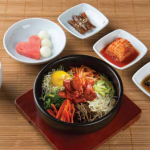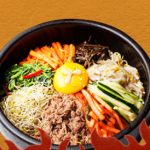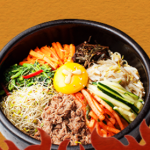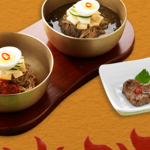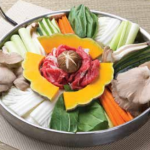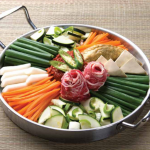Introduction
Welcome to a delectable exploration of tasty Korean cuisine, where the flavors burst in your mouth and take you on a culinary adventure like no other. Korean dishes are praised for their unique combination of flavors, tantalizing aromas, and vibrant colors. In this article, we will uncover the secret ingredients that make these dishes so incredibly delicious, giving you the insider knowledge to recreate them in your own kitchen.
Unveiling the Key Ingredients
Gochujang – The Fermented Chili Paste
Gochujang, a staple in Korean cooking, is the powerhouse behind many tantalizing dishes. This fermented chili paste is the cornerstone of Korean cuisine, adding a deep and complex flavor profile to various dishes. Combining the spiciness of Korean chili peppers, the rich umami taste of soybeans, and the sweetness of rice, gochujang elevates everything it touches, from stews to stir-fries.
Ganjang – The All-Purpose Soy Sauce
Ganjang, or Korean soy sauce, is a savory and aromatic condiment that finds its way into countless Korean recipes. It is made from fermented soybeans, wheat, and salt, and its deep, complex flavors enhance the umami taste of dishes. This versatile ingredient is both a seasoning and a dipping sauce, offering a balance of saltiness while imparting a unique richness to every bite.
Doenjang – The Fermented Soybean Paste
Doenjang is often referred to as the “soybean paste with soul” due to its intense and robust flavor. Made from fermented soybeans and salt, this thick paste is used as the base for many Korean stews and soups. Delivering a distinct nutty and earthy taste, doenjang adds depth and complexity to the dish while imparting a comforting warmth.
Sesame Oil – The Nutty Elixir
Sesame oil, commonly used in Korean cooking, is the finishing touch that adds a delightful nutty aroma to dishes. Made from toasted sesame seeds, this aromatic oil enriches the flavor profile and provides a unique depth to traditional Korean fare. Just a drizzle of sesame oil can transform an ordinary dish into an extraordinary one.
Kimchi – The Pinnacle of Korean Fermentation
No exploration of Korean cuisine would be complete without mentioning kimchi. This iconic side dish captures the essence of Korean flavors and is a staple in virtually every Korean household. Made by fermenting vegetables with chili peppers and other seasonings, kimchi offers a perfect balance of spicy, tangy, and umami flavors. Its unique taste and the health benefits of fermentation have made kimchi beloved worldwide.
Conclusion
Korean cuisine is a harmonious blend of flavors characterized by the use of key ingredients like gochujang, ganjang, doenjang, sesame oil, and kimchi. These elements work together to create a symphony of taste and aroma that truly distinguishes Korean dishes from others. By incorporating these secret ingredients into your own cooking, you can recreate the bold and enticing flavors of authentic Korean cuisine right in your home.
So, unleash your inner chef, bring out the vibrant colors, tantalize your taste buds, and embark on a savory journey through the wonders of Korean cuisine!
FAQs (Frequently Asked Questions)
Q1: Where can I find these key Korean ingredients?
A1: Many Korean ingredients can be found at local Asian supermarkets or specialized online stores. Some common online platforms include Amazon, Hmart, and Korean grocery websites.
Q2: Can I substitute gochujang with another chili paste?
A2: While gochujang is the traditional choice, you can substitute it with a mixture of other chili pastes, such as sambal oelek or miso paste mixed with red pepper flakes. However, be aware that the flavor profile may differ slightly.
Q3: Are these ingredients suitable for vegetarians or vegans?
A3: Yes, many Korean dishes can be made vegetarian or vegan-friendly by choosing the right ingredients. Look for gochujang, ganjang, and doenjang that are labeled as vegan or vegetarian, as some may contain seafood extracts.
Q4: Is kimchi spicy?
A4: Kimchi can vary in spiciness depending on the recipe and personal preference. Traditionally, kimchi is made with Korean chili peppers, which can be quite spicy. However, there are also milder variations available if you prefer a less spicy option.
Q5: Can I make these dishes gluten-free?
A5: While some Korean dishes inherently contain gluten due to the use of soy sauce or fermented grains, there are gluten-free alternatives available. Look for gluten-free soy sauce options or tamari sauce, and ensure that other fermented products you choose are gluten-free as well.
Now that you have unlocked the secrets of Korean cuisine and armed yourself with the knowledge of these key ingredients, it’s time to embark on a flavorful adventure. Get cooking, savor the deliciousness, and impress your friends and family with the mouth-watering taste of authentic Korean dishes!

